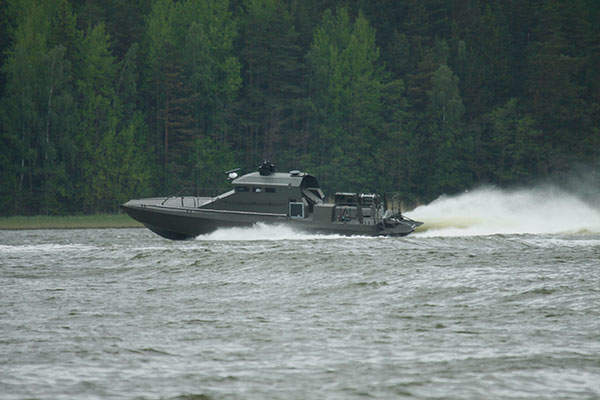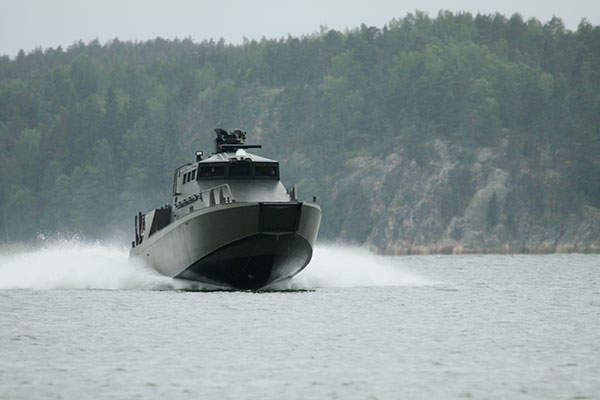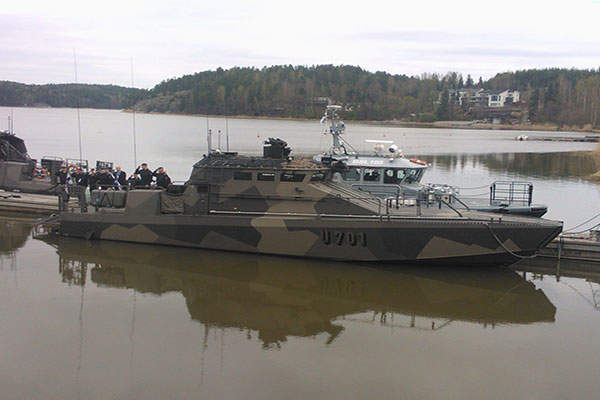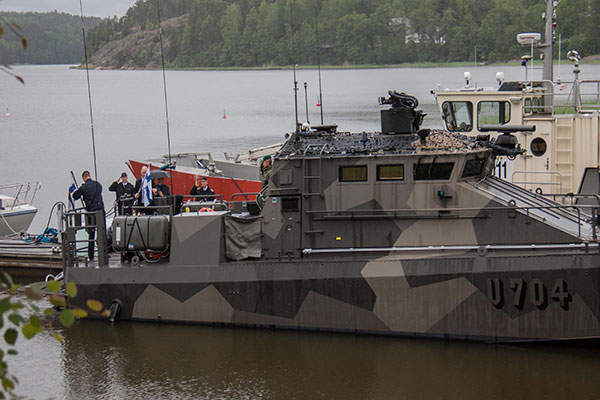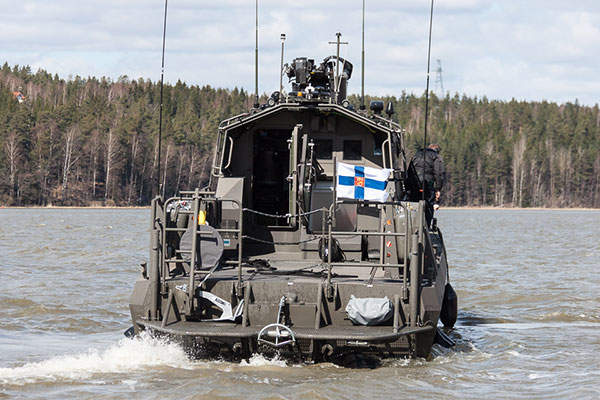Jehu-class (U 700) is a multi-purpose, high-speed landing craft series designed and built by Marine Alutech to meet modern requirements for future combat support service vessels (CSSV).
The Jehu-class is also referred to as Watercat M18 armoured modular craft (AMC).
The vessels are designed to carry out a variety of missions such as patrol, escort, troop transportation, medical evacuation and landing operations. It is also used to provide operational assistance for combat and battle support units.
Orders and deliveries of Watercat M18 combat support vessels
Marine Alutech received an order from the Finnish Navy to manufacture and deliver 12 Watercat M18 landing craft in 2012. Manufacturing of the vessels began at Marine Alutech shipyard in Teijo, Finland, in October 2013.
The boat was demonstrated to the Finnish Defence Forces during Northern Coasts marine military rehearsal held in Turku, Finland, in September 2014.
The first combat support service vessel in the series (U 701) reached the sea trial test stage in June 2014 and was delivered to the Finnish Navy in April 2015.
The second (U 702) and third (U 703) boats were delivered in May 2015. The fourth combat support vessel (U 704) was delivered in June 2015. Deliveries of the remaining eight vessels will continue through 2016.
Design and features of Jehu-class landing craft
The Jehu-class landing craft’s hull and deck are built using aluminium, while its superstructure is made of composite materials.
The boat has an overall length of 19.9m, beam of 4.3m and draught of 1.1m. Its full load displacement is 32t. It is operated by two to five crew members and can carry up to 26 passengers.
Equipped with a heating and air-conditioning system, the amphibious assault craft can be operated in cold and excessive heat conditions.
Armament and protection
The Jehu-class CSSV is fitted with a dual-weapon Trackfire remote-controlled weapon station (RWS) and pedestals for mounting manually operated weapons, including a coaxial PKM machine gun and a 12.7mm NSV/40mm grenade machine gun.
It is installed with countermeasure systems for protection against ballistic, chemical, biological, radiological and nuclear defence (CBRN) threats.
Navigation suite and communications on board Jehu-class craft
Navigation systems on board the Jehu-class craft include satellite navigation and positioning systems, camera monitoring system, forward-looking sonar, video tracker module, autopilot, radar, depth sounder, dual-command human machine interfaces (HMI), automatic identification system (AIS) and high-performance sensor module.
The vessel’s communications systems include comprehensive radio equipment and Inmarsat-C military and data communications. An intercom system is installed to provide on-board communication.
Propulsion and performance
The Jehu-class landing craft is powered by Scania diesel engines rated at 660kW each. The vessel also features two Rolls-Royce 40A3 water jets, two ZF 500 gearboxes and an auxiliary engine, Fischer Panda 25i PMS. It has a fuel capacity of 2,100l.
The propulsion system provides a maximum speed of more than 40k and a cruising speed of up to 35k. The vessel is operable in archipelago, coastal and offshore conditions.
Contractors involved with the Watercat M18 AMC
Saab received a contract to supply 12 Trackfire remote weapon stations for integration on the Watercat M18 AMC in December 2012. The contract also requires Saab to provide support and training services for weapon stations.
Rolls-Royce won a contract to deliver two 40A3 water jets and a control system for 12 landing craft in December 2012. The control system is used to improve the manoeuvring capabilities of the vessels.

